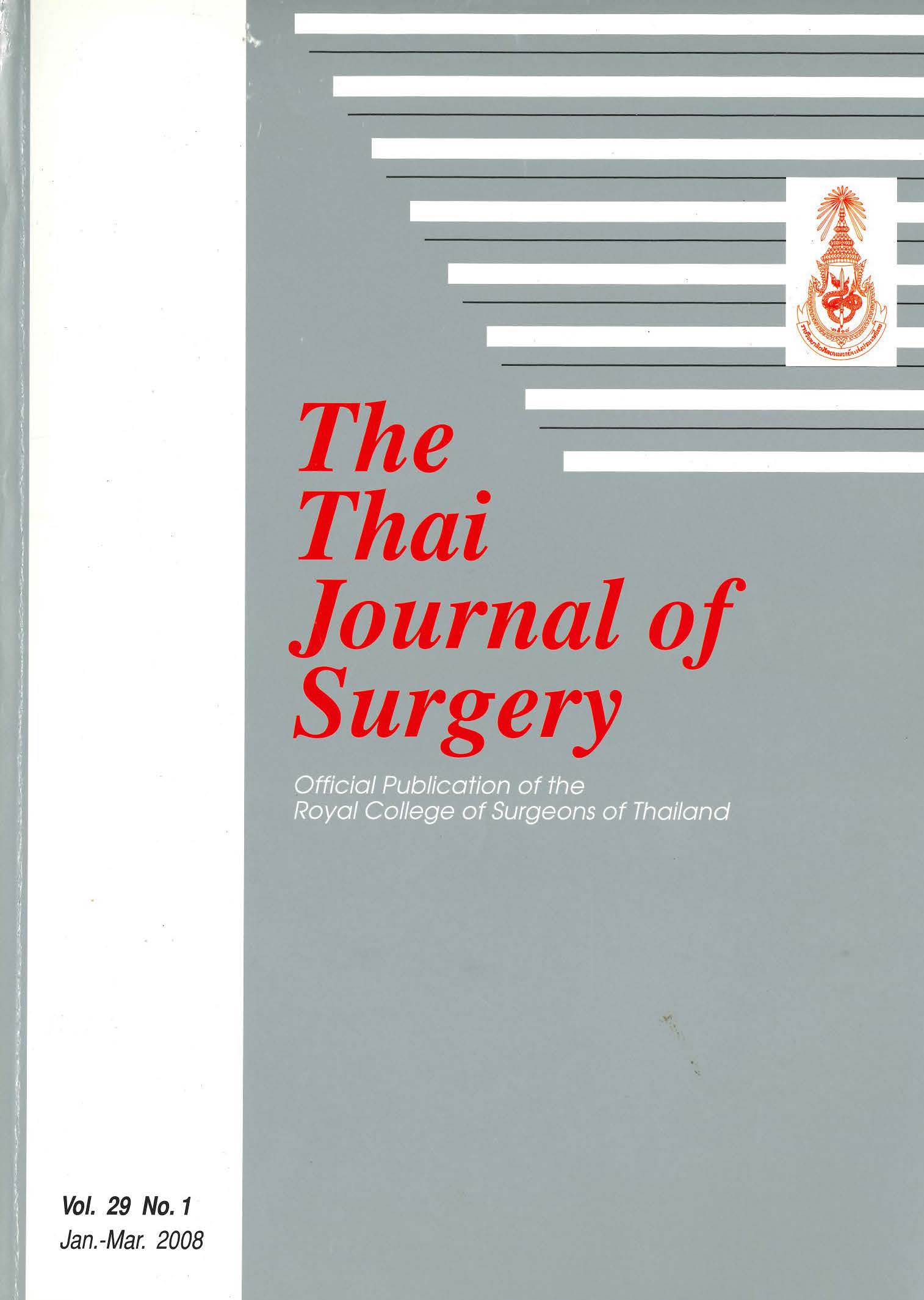Recombinant Activated Factor VII: An Addition to Replacement Therapy in Trauma Patients with Uncontrolled Massive Bleeding
Abstract
Introduction: Trauma patients tend to have multiple sites of bleeding, sometimes in surgically inaccessible areas of the pelvis and retroperitoneum or in an organ that is difficult to control or repair such as the liver. Massive transfusion will lead to various complications of dilutional coagulopathy, acidosis and hypothermia, which will slow the enzymatic reactions of the coagulation cascade and impair platelet function. Recently, several studies reported the effectiveness of recombinant activated factor VII (rFVIIa) in restoring hemostasis in patients with massive bleeding related to trauma and surgery. Here, we report the use of rFVIIa in addition to blood component therapy to control massive bleeding in patients with trauma.
Materials and Methods: Recombinant activated factor VII (rFVIIa) at the initial dose of 100 µg/kg followed by 40 µg/kg at 4-6 hour interval for 24-48 hour was given as a rescue therapy to 8 males with trauma exhibiting massive bleeding unresponsive to surgical intervention and replacement therapy. Their median age was 24 years old. Causes of trauma included gun shot (n =1), multiple stabs (n = 3) and motorcycle accident (n= 4). Each patient sustained 2-5 injured sites involving the chest (n= 5), liver (n = 3), artery and vein (n = 6) and one each at the heart, brain, spleen and kidney. Five patients underwent simultaneously exploratory laparotomy and chest exploration (n = 4), and craniotomy and thigh exploration (n= 1). The remaining 3 patients underwent neck, thigh and chest explorations.
Results: Two patients died and 6 patients survived. No thrombotic complication was detected.
Conclusions: Our small series of patients with trauma suggested the potential benefit of rFVIla as a rescue therapy to control unresponsive massive bleeding.
References
2. Hoffman MR, Martinowitz U, Tobias JD, Dutton RP. Excessive bleeding in surgery and trauma: new concepts in coagulation theory and an updated treatment paradigm. Surgical Rounds (Special Supplement); 2002. p. 5-24.
3. Broos PL, Janzing HM, Vandermeeren LA, Klockaerts KS. Life saving surgery in polytrauma patients. Przegl Lek 2000;57(Suppl 5):118-9.
4. Ferrara A, MacArthur JD, Wright HK, Modlin IM, McMillen MA. Hypothermia and acidosis worsen coagulopathy in the patient requiring massive transfusion. Am J Surg 1990;160:515-8
5. Kenet G, Walden R, Eldand A, Martinowitz U. Treatment of traumatic bleeding with recombinant factor Vlla. Lancet 1999;354:1879.
6. Martinowitz U, Kenet G, Segal E, Luboshitz J, Lubetsky A, Ingerslev J, et al. Recombinant activated factor Vll for adjunctive hemorrhage control in trauma. J Trauma 2001;51:431-8.
7. White B, McHale J, Ravi N, Reynolds J, Stephens R, Moriarty J, et al. Successful use of recombinant FVIla (NovoSeven®) in the management of intractable post-surgical intra-abdominal haemorrhage. Br J Haematol 1999;107:677-8.
8. AI Douri M, Shafi T, Al Khudairi D, Al Bokhari E, Black L, Akinwale N, et al. Effect of the administration of recombinant activated factor VII (rFVlla; NovoSeven) in the management of severe uncontrolled bleeding in patients undergoing heart valve replacement surgery. Blood Coagul Fibrinolysis 2000:11(Suppl 1):S121-7.
9. Hedriks HG, van der Maaten JM, de Wolf J, Waterbolk TW, Slooff MJ, van der Meer J. An effective treatment of severe intractable bleeding after valve repair by one single dose of activated recombinant factor VIl. Anesth Analg 2001;93:287- 10, von Heymann C, Hotz H, Konertz W, Kox WJ, Spies C. Successful treatment of refractory bleeding with recombinant factor Villa after redo coronary artery bypass graft surgery. J Cardiothorac Vasc Anesth 2002;16:615-6.
11. Rutledge R, Sheldow GF, Collins ML. Massive transfusion. Crit Care Clin 1986;2:791-805.
12. Hewitt PE, Machin SJ. Massive transfusion. In: Contreras M, editor. ABC of transfusion. Rugby: BMJ Publishing Group; 1992. p. 38-40.
13. Fakhry SM, Sheldon GF. Massive transfusion in the surgical patient. In: Jefferies LC, Brcher ME, editors. Massive transfusion. Bethesda: American Association of Blood Banks; 1994. p. 17-38.
14. Clark AD, Gordon WC, Walker ID, Tait RC. "Last-ditch" use of recombinant factor Vlla in patients with massive haemorrhage is ineffective. Vox Sang 2004;86:120-4.
15. Hedner U. Mechanism of action of recombinant activated factor Vll: an update. Semin Hematol 2006;43(Suppl 1):S105-7.
16. Friederich PW, Henny CP, Messelink EJ, Geerdink MG, Keller T, Kurth KH, et al. Effect of recombinant activated factor VII on perioperative blood loss in patients undergoing retropubic
prostatectomy: a double-blind placebo-controlled randomized trial. Lancet 2003;361:201-5.
17. Martinowitz U, Kenet G, Lubetski A, Luboshitz J, Segal E. Possible role of recombinant activated factor VII (rFVlla)in the control of hemorrhage associated with massive trauma. Can J Anaesth 2002:49:S15-20.
18. Dutton RP, McCunn M, Hyder M, D'Angelo M, O'Connor J, Hess JR, et al. Factor Vll for correction of traumatic coagulopathy. J Trauma 2004;57:709-19.
Downloads
Published
How to Cite
Issue
Section
License
Articles must be contributed solely to The Thai Journal of Surgery and when published become the property of the Royal College of Surgeons of Thailand. The Royal College of Surgeons of Thailand reserves copyright on all published materials and such materials may not be reproduced in any form without the written permission.



